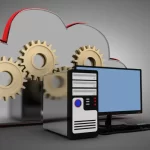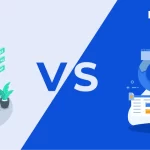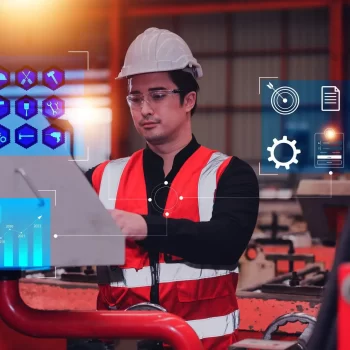In today’s cloud-driven world, keeping track of your software services is no longer optional—it’s essential. SaaS infrastructure monitoring helps IT teams keep an eye on the performance, uptime, and health of all cloud-based applications and systems in real time. With businesses relying heavily on remote tools and digital platforms, monitoring your SaaS stack ensures smooth operations and quick issue resolution. It also supports smarter asset lifecycle management, helping you optimize costs and performance. In this post, we’ll explore key benefits, must-know trends, and how platforms like Infraon simplify SaaS monitoring for modern IT operations.

Understanding SaaS Infrastructure Monitoring
What Is SaaS Infrastructure Monitoring?
SaaS infrastructure monitoring is the process of closely monitoring the health, performance, and usage of cloud-based software services. As more businesses shift to SaaS platforms for everything from communication to data storage, monitoring ensures these services run smoothly without interruptions. It gives IT teams real-time visibility into system behavior, helping them detect and fix issues before users are affected.
This kind of monitoring isn’t just about uptime—it also supports asset lifecycle management by showing how different applications are being used, when they need updates, and when it’s time to retire them.
Key Components of a Monitoring Stack
A strong SaaS monitoring setup usually includes:
- Performance Monitoring: Tracks application speed, load times, and response rates.
- Usage Analytics: Helps understand how services are used across departments or teams.
- Alerting System: Sends notifications when there’s a problem or unusual activity.
- Integration Capabilities: Connects with other IT tools for a full picture view.
Following IT operations best practices, SaaS monitoring ensures better service quality, faster issue resolution, and improved planning for future growth. It’s a smart step for any business relying on cloud solutions.
The Business Impact of Effective Monitoring
Effective SaaS infrastructure monitoring goes beyond just checking if systems are working—it helps businesses stay efficient, reduce costs, and keep users happy. Here’s how it directly benefits your operations:
- Ensuring High Availability and Uptime: Downtime can lead to lost productivity and unhappy customers. Monitoring tools help IT teams detect issues early, trigger alerts, and resolve problems before they affect users. This keeps services running around the clock and ensures business continuity.
- Optimizing Performance and User Experience: Slow applications hurt employee output and customer trust. With performance monitoring, teams can identify bottlenecks, fix bugs, and improve load times. A smooth experience keeps users satisfied and loyal to your service.
- Cost Control and Resource Efficiency: Monitoring tools track usage trends and resource consumption. This helps teams scale down underused tools, avoid unnecessary renewals, and make smarter infrastructure decisions. It ensures better planning and long-term savings when paired with ITIL asset and configuration management.
With the right strategy, SaaS infrastructure monitoring becomes a powerful way to protect revenue, boost performance, and reduce operational risks.
Technical Advantages for IT Operations
Modern IT teams face growing complexity as infrastructure spreads across multiple cloud services. Using the right tools, like Infraon’s monitoring solutions, brings strong technical benefits that improve stability and responsiveness.

- Proactive Incident Detection: Real-time alerts and monitoring dashboards help IT teams spot unusual behaviour early, before it impacts users. This proactive approach reduces service disruptions and improves reliability across the board.
- Root Cause Analysis and Faster MTTR: When something goes wrong, fixing the surface issue is not enough. Monitoring tools help trace problems back to their source. With Configuration Management Database (CMDB) support, teams can map dependencies and fix issues faster, reducing Mean Time to Resolution (MTTR).
- Scalability and Elasticity: As businesses grow, so do their infrastructure needs. Good monitoring platforms adjust automatically to track new services, users, or workloads. This elasticity helps IT teams scale confidently without losing visibility or control.
By combining smart monitoring with a strong configuration management database (CMDB), Infraon enables IT operations to run smoothly, detect issues early, and manage growth with ease. It’s a key step toward a more efficient and resilient IT environment.
Best Practices for SaaS Infrastructure Monitoring
Businesses need a clear strategy to get the most out of SaaS infrastructure monitoring. It’s not just about collecting data—it’s about using it smartly to improve uptime, performance, and efficiency.

- Choosing the Right Monitoring Tools: Start by selecting tools that offer real-time visibility, customizable dashboards, and smooth integration with your existing systems. Platforms like Infraon make it easy to track performance, detect issues, and manage alerts—all in one place.
- Defining Meaningful KPIs and SLIs: Set clear metrics that reflect service health. Key Performance Indicators (KPIs) and Service Level Indicators (SLIs) should match business goals—like uptime, response times, and error rates. This helps teams stay focused and act quickly when something goes wrong.
- Integrating with DevOps Workflows: Monitoring should be part of your DevOps process for faster development and smoother deployments. When alerts and insights flow directly into your CI/CD pipelines, teams can fix issues early and deliver updates with confidence.
Smart monitoring also supports asset lifecycle management, helping you understand how tools are used over time and when to upgrade or retire them. Done right, it builds a strong, agile, and reliable IT foundation.
Emerging Trends and the Future of Monitoring
The world of SaaS infrastructure monitoring is evolving fast. With growing digital complexity and distributed environments, monitoring is no longer just about uptime—it’s about deep visibility, faster insights, and smarter decision-making. Let’s look at where things are headed.
- AI-Powered Anomaly Detection: Modern monitoring tools are starting to rely on intelligent pattern recognition to spot unusual activity in real time. Instead of just setting static thresholds, these systems learn from historical data and alert teams to potential issues before they escalate, saving time and reducing service disruption.
- Unified Observability Platforms: Businesses now prefer platforms that bring logs, metrics, traces, and dashboards together in one place. This unified view helps teams understand what’s happening across all services, applications, and infrastructure, without switching between tools. It simplifies root cause analysis and improves collaboration between IT and DevOps teams.
- Edge and IoT-Driven SaaS Models: As edge computing and IoT devices become more common, monitoring tools are expanding to cover these environments. Monitoring now includes not just central servers but also remote devices and microservices. This is especially important for businesses that rely on real-time data and distributed systems.
With these trends, the future of SaaS infrastructure monitoring looks more connected, predictive, and efficient, driving better outcomes across IT operations.

Conclusion
In today’s fast-moving digital world, SaaS infrastructure monitoring isn’t optional—it’s a must. It helps keep systems reliable, users happy, and teams in control. From spotting issues early to supporting long-term asset lifecycle management, strong monitoring makes IT smarter and more secure. As your business grows, the need for real-time visibility, unified tools, and proactive insights becomes even more critical.
If you haven’t reviewed your current monitoring setup in a while, now’s the time. Platforms like Infraon offer powerful, flexible tools to help you stay ahead. Evaluate your tools, set smart goals, and strengthen your IT operations for the future.
FAQ
1. What metrics should I track for SaaS infrastructure?
Track uptime, response time, error rates, CPU and memory usage, database performance, and user activity. These metrics help ensure your apps run smoothly and users stay satisfied. Platforms like Infraon make it easy to monitor all critical parameters in one place.
2. How often should I review monitoring alerts?
Review alerts in real time for critical systems and at least daily for non-urgent issues. Regular reviews prevent missed problems and ensure quick responses. With Infraon’s alert management, teams can prioritize and streamline this process effectively.
3. Can I use open-source tools for enterprise-grade monitoring?
Yes, tools like Prometheus and Grafana offer solid performance, but they may lack advanced support and integration. For enterprise needs, platforms like Infraon combine open-source flexibility with robust features, scalability, and user-friendly dashboards.
4. What’s the ROI of investing in advanced observability?
Advanced observability reduces downtime, improves performance, and speeds up incident response. This translates to better customer satisfaction and lower operational costs. With Infraon, businesses gain faster insights and long-term savings through proactive infrastructure management.
5. How does AI enhance SaaS monitoring capabilities?
AI helps detect anomalies, predict failures, and automate root cause analysis. It adds intelligence to your alerts and improves response time. Infraon leverages AI to turn raw monitoring data into actionable insights—keeping your systems stable and efficient.



















